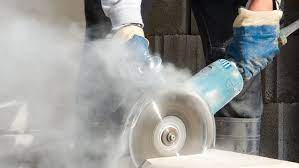Get in contact today
Protecting Yourself from the Dangers of Dust When Renovating or Doing General Handyman Building Work In Chelmsford Essex CM1
Looking after our health in Chelmsford Essex CM1
John Dillon
4/24/20242 min read


Understanding the Dangers of Dust When Renovating or Doing General Handyman Building Work
When it comes to renovating or doing general handyman building work, one of the most overlooked hazards is the creation of dust. Dust particles may seem harmless, but they can pose serious health risks if proper precautions are not taken. In this article, we will explore the dangers of dust and provide you with essential steps to protect yourself.
I myself have being guilty in the past of not taking proper precautions when completing jobs and not fowling guide lines. We need to look after our health.
The Health Risks of Dust
Dust generated during renovation or building work can contain various harmful substances, such as asbestos, lead, silica, and wood dust. These particles are small enough to be inhaled and can cause significant damage to your respiratory system.
Exposure to asbestos can lead to serious lung diseases, including lung cancer and mesothelioma. Lead dust can cause lead poisoning, which can result in developmental delays, neurological problems, and even death. Silica dust, commonly found in concrete and masonry work, can cause lung cancer and respiratory diseases. Wood dust, especially from hardwoods, can lead to nasal and sinus cancer.
Taking Steps to Protect Yourself
Protecting yourself from the dangers of dust is crucial. Here are some essential steps you should take:
1. Wear Protective Gear
Always wear appropriate personal protective equipment (PPE) when working in a dusty environment. This includes a dust mask or respirator, safety goggles, gloves, and disposable coveralls. The PPE will help prevent inhalation or skin contact with harmful dust particles.
2. Control Dust at the Source
Take measures to minimize the creation and spread of dust. Use dust collection systems or vacuums with HEPA filters to capture dust at the source. Wet methods, such as misting surfaces with water, can help suppress dust during demolition or cutting activities.
3. Ventilate the Work Area
Ensure proper ventilation in the work area to reduce dust concentration. Open windows and doors, and use fans or air purifiers to improve air circulation. This will help remove airborne dust particles and maintain a safer working environment.
4. Clean Up Properly
After completing the work, clean up the area thoroughly. Use wet methods or HEPA-filtered vacuums to remove dust from surfaces, floors, and equipment. Avoid using brooms or compressed air, as they can stir up dust and disperse it into the air.
The Do's and Don'ts
Here are some important do's and don'ts to keep in mind when working in a dusty environment:
Do:
Follow safety guidelines and regulations related to dust control.
Keep children, pets, and vulnerable individuals away from the work area.
Seek medical attention if you experience any respiratory symptoms after working with dust.
Don't:
Ignore the potential risks of dust exposure.
Use makeshift or inadequate personal protective equipment.
Dispose of dust-contaminated materials improperly.
By understanding the dangers of dust and taking necessary precautions, you can protect yourself from the health risks associated with renovation or general handyman building work. Remember to always prioritize your safety and follow best practices to minimize exposure to harmful dust particles.
